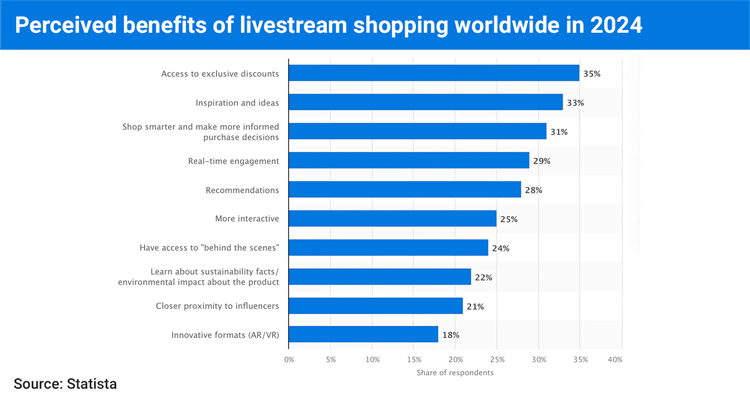
Once a niche experiment, livestreaming social shopping is rapidly becoming a central part of the digital commerce landscape—particularly as Western brands begin to adopt tactics that have long proven successful in Asian markets.
The model, which first gained momentum in China through platforms like Alibaba’s Taobao Live, combines real-time video interaction with e-commerce. A host—be it a brand representative, influencer, or even a regular user—presents products live, engages with viewers, and enables immediate purchasing through integrated links. The format offers more than just convenience; it creates a participatory experience that replicates the urgency and energy of in-store shopping, but on digital platforms.
While livestream shopping has been entrenched in Chinese retail culture for over a decade, Western markets are now accelerating their adoption. According to Sprout Social, the U.S. livestream commerce market is expected to more than double, from $31.7 billion in 2023 to $67.8 billion by 2026. That upward trajectory signals a shift in how consumers discover and engage with products online, especially younger demographics accustomed to shopping via social platforms.
The format isn’t entirely new. In many ways, it mirrors the model popularized in the 1980s by the Home Shopping Network (HSN), where charismatic hosts would pitch products live on TV. The difference now lies in the medium—social media channels and e-commerce sites have replaced TV sets, and «Call Now» hotlines have been substituted with real-time chat and «Buy Now» buttons.
Today’s live shopping events offer real-time product demos, interactive Q&A, and unfiltered customer feedback. According to Sprout Social’s insights, 14% of U.S. adults have already made a purchase through a live shopping stream, while 19% express interest in participating. This indicates a growing appetite, even if the U.S. market still lags behind China’s industry—valued at 4.9 trillion yuan (approx. $680 billion) in 2023.
The appeal for brands is twofold: increased engagement and measurable conversion gains. Tru Earth, a Canadian eco-friendly laundry brand, reported a 20% increase in conversions during a recent product launch live event, co-founder Ryan McKenzie told Sprout Social. These sessions, streamed via their own site and social platforms, have become integral to their customer acquisition strategy.
Platforms built specifically for live commerce are also reporting strong outcomes. Buywith, which facilitates influencer-hosted live shopping streams, shared during a recent webinar that brands using their service have experienced conversion increases of up to 10 times compared to traditional e-commerce formats.
Luxury and fashion retailers have been quick to experiment with social commerce tools. Printemps, a French fashion department store, uses Bambuser for its live events and consistently sees impressive engagement. One case study cited by Sprout Social reports over 300,000 impressions per event, with 20% returning viewers, and live shows generating over 40% of daily partner sales.
The live format also benefits smaller or niche brands that rely on storytelling and personal engagement. Platforms like Amazon Live, Poshmark’s Posh Shows, and integrated tools on Instagram and TikTok allow nearly anyone to become a live host, democratizing who gets to be a salesperson in this new era of commerce.
Still, challenges remain. Building an effective live commerce strategy requires more than a camera and an audience. Brands must think through content pacing, product selection, talent choice, and post-event marketing. Integration with fulfillment systems and clarity around return policies are also key to maintaining trust.
But with consumer attention splintered across countless digital spaces, livestreaming social shopping offers a rare opportunity: a moment of focused interaction that blends entertainment, authenticity, and commerce.







